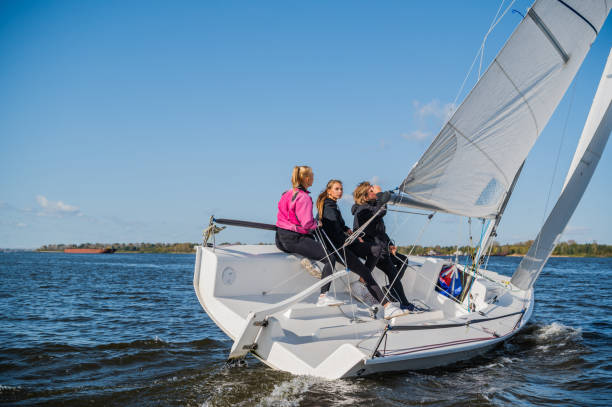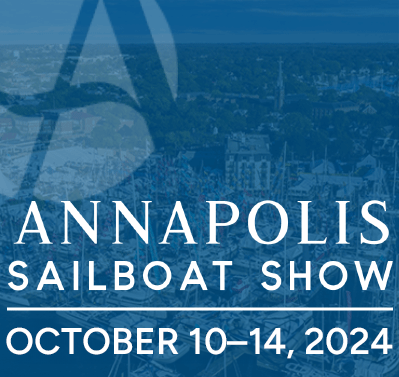New Wind-Powered Cargo ships: The future of marine transportation?
Wind-powered cargo ships: The future of marine transportation?
Most our readers like to learn about sailing technology and the sailing world. You can check these articles, it is fun, informative and easy to read:
Do you want to experience sailing adventures and find sailing opportunities?
It is assumed that Pyxis Ocean can reduce fuel consumption by 30%. Combined with green fuel it will help to reach the shipping industry pledge to zero emission by 2050 and a big money saving for the operating company Cargill.

The WindWing technology is not fit for all boats because it is impossible to install them on a cargo ship that carries large containers that are many layers tall. It can only be installed on bulk carriers where the load like grain is stored under deck.
Oceanbird, a new giant wind-powered cargo concept:
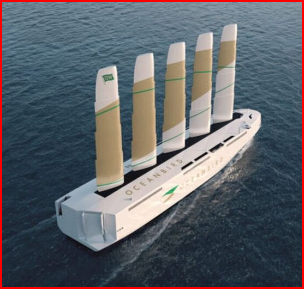
In January 2022, the Oceanbird project was a concept for a wind-powered cargo ship developed by Wallenius Marine, a Swedish shipping company. The goal of the project was to create a more sustainable and environmentally friendly solution for maritime transport by harnessing the power of wind. The design featured a large set of retractable wings or sails that could be deployed to capture wind energy and assist in propelling the ship.
E-Ship 1: a german vessel
The E-Ship 1, operated by the German company Enercon, uses four large rotors to capture wind energy and reduce fuel consumption. Enercon is primarily known for its focus on renewable energy solutions, particularly wind energy. The E-Ship 1 is notable for its innovative approach to harnessing wind power for propulsion.
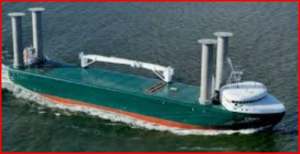
Key features of the E-Ship 1 wind powered cargo include:
- Rotor Sails: One of the distinctive features of the E-Ship 1 is the use of four large, vertically mounted rotor sails. These rotor sails are essentially spinning cylinders that capture wind energy and convert it into forward thrust. The rotors can be adjusted to the optimal angle for capturing wind, helping to improve the efficiency of the ship’s propulsion.
- Hybrid Propulsion System: The E-Ship 1 combines traditional propulsion methods with wind power. In addition to the rotor sails, a conventional engine can power the ship when necessary, such as during low wind conditions or when maneuvering in ports.
- Reduced Fuel Consumption: The integration of wind power through rotor sails aims to reduce the ship’s reliance on fossil fuels, resulting in lower fuel consumption and, consequently, a decrease in greenhouse gas emissions.
Fair transport: Traditional sailing cargo ship
The Tres Hombres is a traditional sailing cargo ship that Fair Transport uses for transporting goods across the Atlantic and other routes. It is a schooner with a design reminiscent of historic sailing vessels. The ship relies on wind power for propulsion, and its goal is to demonstrate the viability of emission-free cargo transport using traditional sailing methods.
The Tres Hombres transports various cargoes, including rum, chocolate, coffee, and other goods. The ship’s journey is often documented, and customers can track its progress. They learn more about the sustainable transportation efforts promoted by Fair Transport.
- Wing Sail Technology: Windship Technology primarily utilizes advanced wing sail technology to capture wind energy and assist in propelling ships. The company’s systems typically involve the installation of large, vertical wing sails on vessels.
- Retrofitting Existing Ships: One of the key aspects of Windship Technology’s approach is the retrofitting of existing vessels with their wind-assist systems. This allows shipowners to upgrade their fleets and benefit from the fuel efficiency gains provided by wind propulsion.

Wind powered ships: The future of passengers transportation?
- Is the sailing liner the future of passenger transport?
- Is passenger transport by sail a real alternative to air or ferry, to get from point A to point B?
Sailing ships: the future of passenger transport?
Sailing cargo transport has already been back on a small scale for several years, thanks in particular to two forerunners: TOWT, in 2011, and Grain de Sail, in 2018. In 2021, the very first modern sailing cargo ship will be launched: the cargo ship Canopée! New sailing cargo initiatives continue to emerge: Neoline, Eco Trans Océan, Solidsail or sailor François Gabart’s start-up Vela. And that’s a good sign! There are real opportunities to revolutionize maritime freight transport, to reduce or even totally eliminate its impact on the environment. What about passenger sailing projects?
Passenger sailing projects:
As far as passenger sailing is concerned, apart from the TOWT and Eco Trans Océan cargo sailboat projects, which will feature a few passenger cabins, there seem to be fewer projects.
80-passenger catamarans for daily shuttles to French islands, with Sailcoop
SAILCOOP project
The Sailcoop cooperative plans to build a series of 80-passenger catamarans to serve the French islands of Groix, Yeu, Porquerolles and Les Glénan from spring 2024. You can help finance this project.
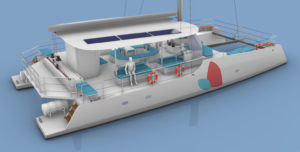
Silenseas, two new-generation sailing liners, under construction at Chantiers navals de Saint-Nazaire
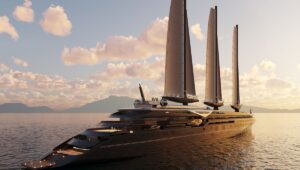
Existing sailing ships for maritime passenger transport
If you’re planning to travel on a liner powered by the wind, rest assured: there are already opportunities to embark on a sailing liner, and limit your carbon footprint while sailing.

